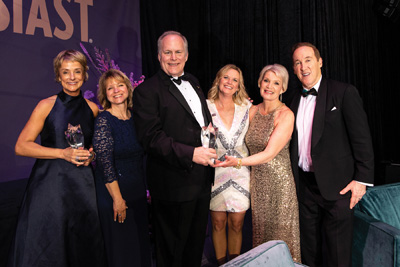So, let me see if I’ve got this right. If I think there is a wage gap between men and women, I have been duped by a scam. Because if women worked like men, and didn’t quit to have babies or raise children, they would be paid the same as men.
I don’t think so.
The Equal Pay Act and the Civil Rights Act of 1964 were not adopted to deal with the wage gap between men and women. The Equal Pay Act was adopted to address the wage gap between races. The Civil Rights Act was adopted to deal with the larger issue of discrimination. The fact that the Civil Rights Act contains language relating to "sex" came about as a result of a joke. During the debate prior to its adoption, Southern Democrats inserted "sex" into the text. They never expected that anyone would take sex seriously as a discrimination issue.
Given the legislative history and today’s modern business practices it’s not likely that women can expect much in the way of wage gains through legal action. (We men are too smart to let that happen.)
The odd thing about this issue is that both argumentsÑthat a wage gap does exist and that a gap does not exist—are credible. Both arguments are based upon numerous valid studies and statistics. However, to really understand the wage gap one has to look at it from different perspectives.
Let’s take the case of Brenda Barnes, former chief executive of Pepsi-Cola, who quit to be with her children. What a loss for Pepsi-Cola. Think about it. Twenty-two years and 18 months as the chief executive, and all that talent and wonderful experience is gone, just because someone couldn’t find a way to help her meet her personal and professional needs.
If we assume she took home $1,000,000 a year in compensation, and if we apply the standard turnover loss formula jointly developed by the Society of Human Resource Management and the Saratoga Institute, the financial impact of her leaving Pepsi will cost the company at least $325,000 plus the additional time, effort and costs the company must shoulder to find a replacement.
The wage gap between men and women might really be a talent gap—a talent gap that reflects the inability of some companies to attract and retain talented woman. If more women are graduating from college than men, that would suggest that the talent base is shifting and businesses had better find ways to tap into it.
Are businesses ready to take advantage of this talent pool? Probably not. Why? Because to do so we would have to rethink how we structure "work" and how that structure limits our ability to attract and retain talented women.
It has only been in the last 30 years that we have had large numbers of women enter the work force and attempt to build both careers and families at the same time. Companies for the most part have ignored the special needs of working women as reflected in the lack of accessible and affordable childcare, flexible staffing and paid family leave. Businesses typically see these benefits as "expenses," rather than "investments in the future."
Sonoma County has a 2.2% unemployment rate, which means that all of the talented people a business would want to employ are working for someone else. So, if 80% of women bear children, and employed mothers frequently choose jobs that allow them to integrate work and family, there would appear to be a golden opportunity for businesses starved for talent to actively recruit these women by providing the flexibility and benefits that appeal to them.
Paine Fitzgerald and Company, a consulting firm that specializes in post exit interviewing (post exit interviews occur approximately three to six months after an employee has left employment), has found that some women employees feel that they were not valued at their prior jobs and that their supervisors were not sensitive to problems with scheduling and child care. In fact, some women were willing to take pay cuts to work in companies that were more supportive of their needs.
Perhaps the wage gap between men and women really identifies a gap between companies that are sensitive to women’s issues and companies that are not.
In the December issue of Entrepreneur Magazine, Ken Blanchard, chief spiritual officer of the Ken Blanchard Companies said "Hiring and retaining good people [will be critical in 2001]. The role of the managers will be more important than others because the number one indicator of job satisfaction is the relationship people have with their bosses." Competition for the best employees would suggest that companies interested in being successful in the future better make sure that they have good managers and the necessary structures and policies in place that will allow talented and productive men and women to remain with them. Research has shown that it can be far more expensive in terms of productivity and morale to recruit and train new employees than it is to retain existing top performing employees.
The real story about the wage gap is in the lives of the women who have had to choose between family and career. They have lived the experience and know what impact it’s had on their lives. We may not be able to agree that a wage gap between men and women exists, but that doesn’t prove that there is not a problem with compensation policies. The discussion ought to shift away from the superficial wage gap issue and focus on the real problems women face in the work place trying to balance family and career. If we do that, then perhaps we can actually solve the problem.
John McHugh is a business services consultant with over twenty years of experience in human resource management experience. He founded JPMcHugh in 1994 to help companies meet their employment challenges.



